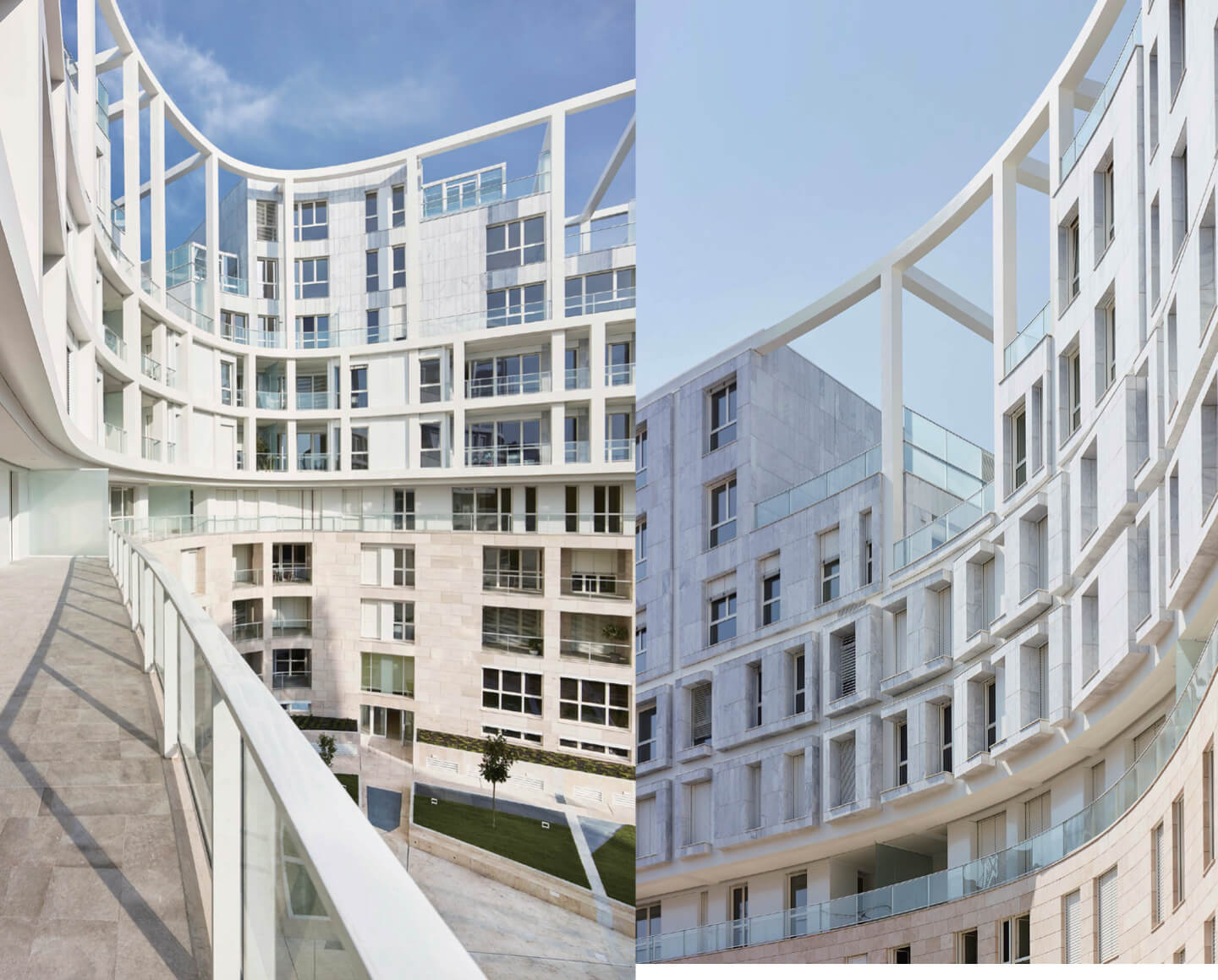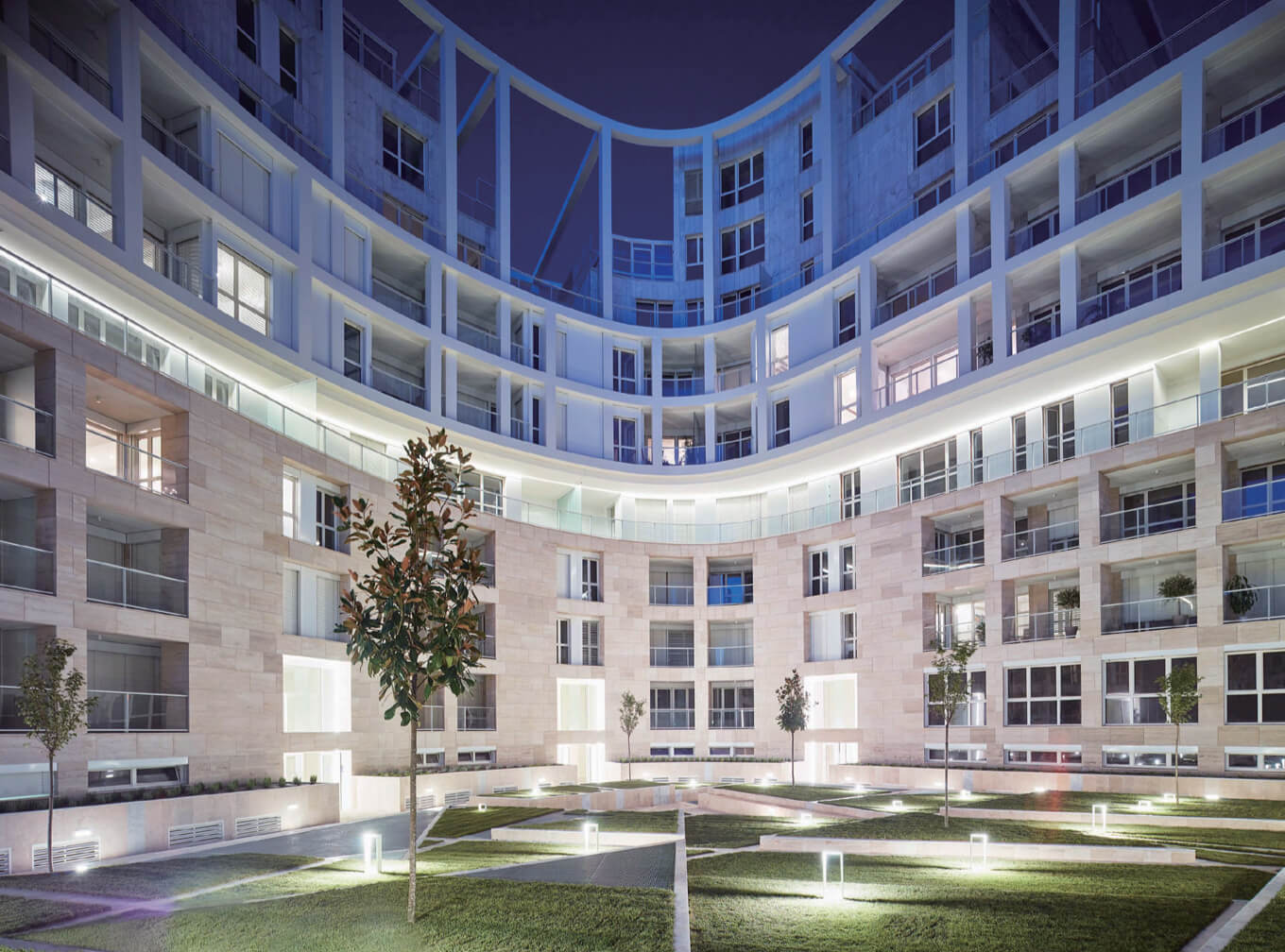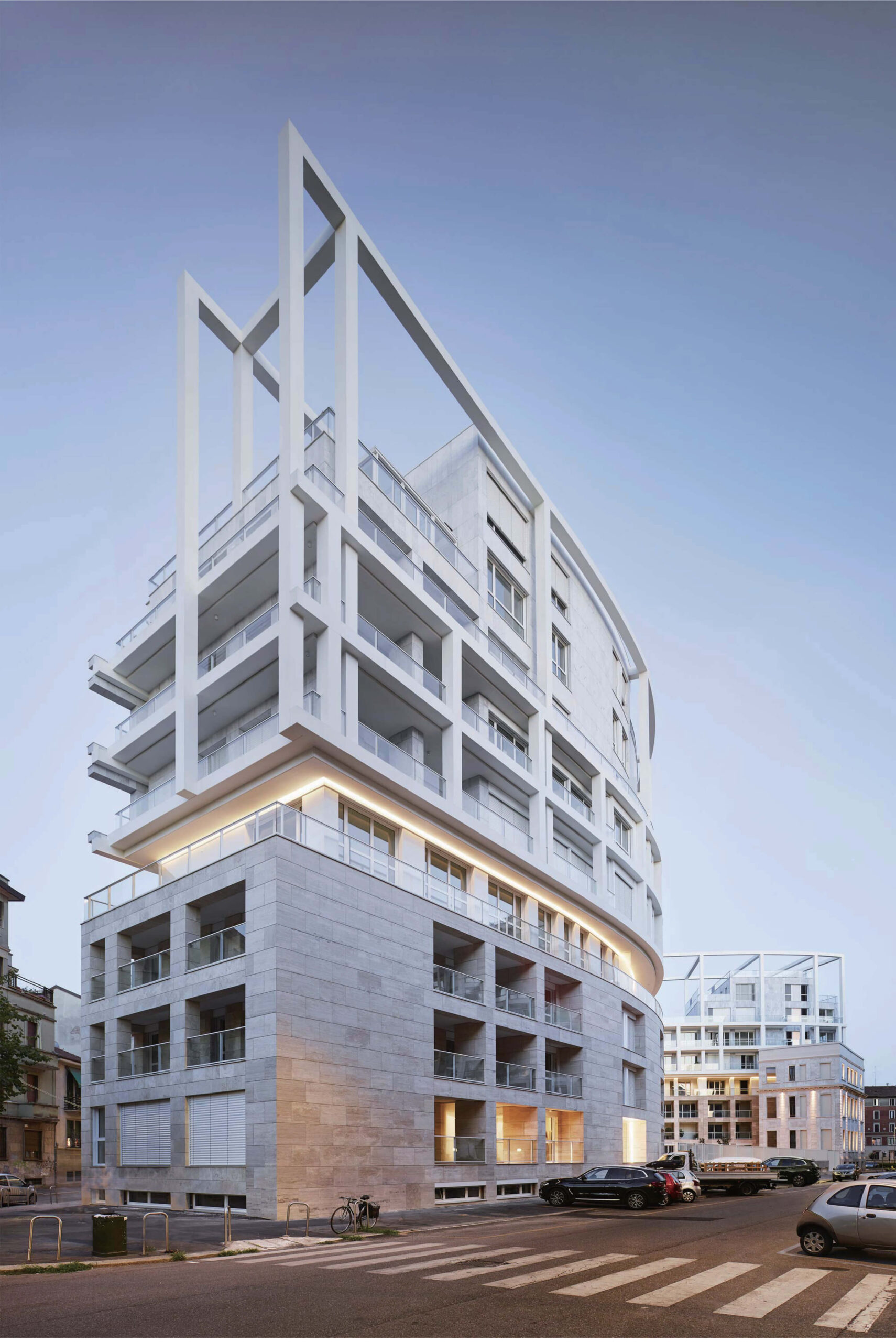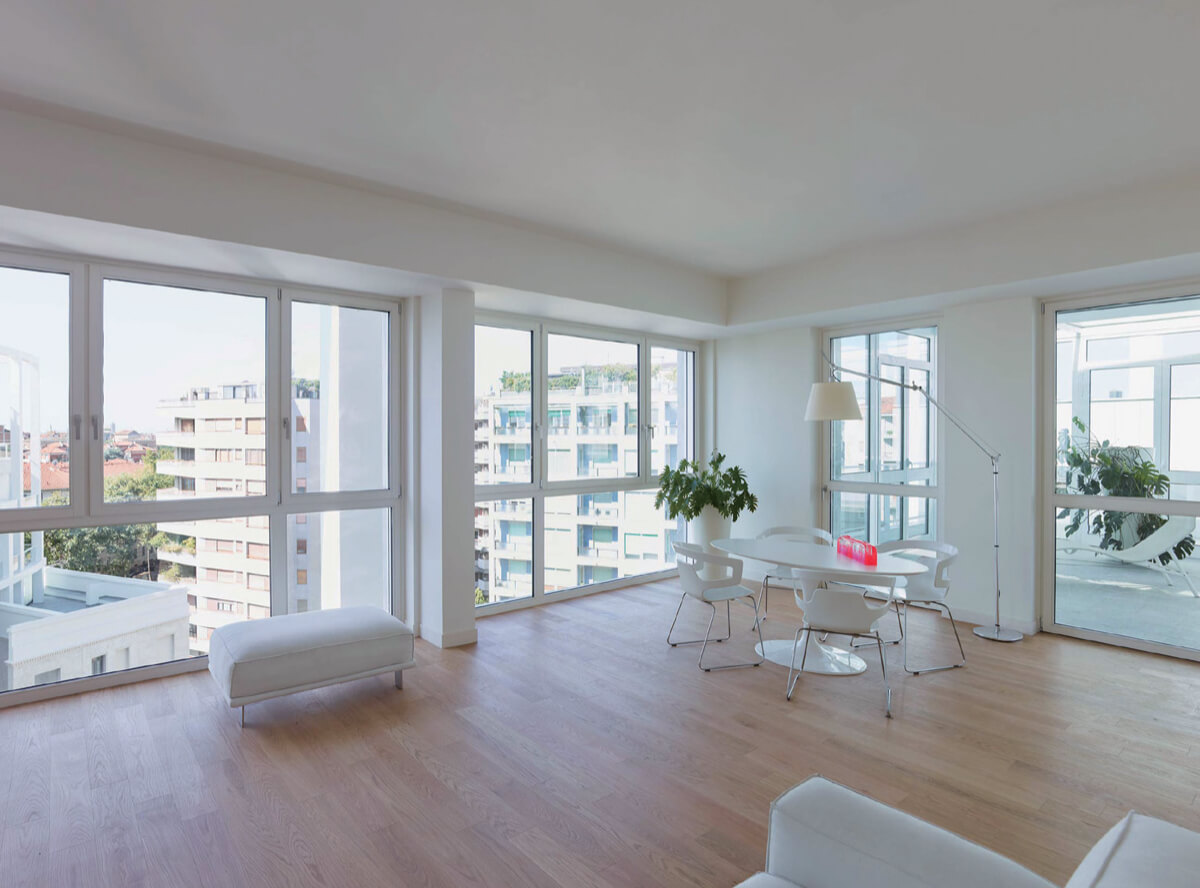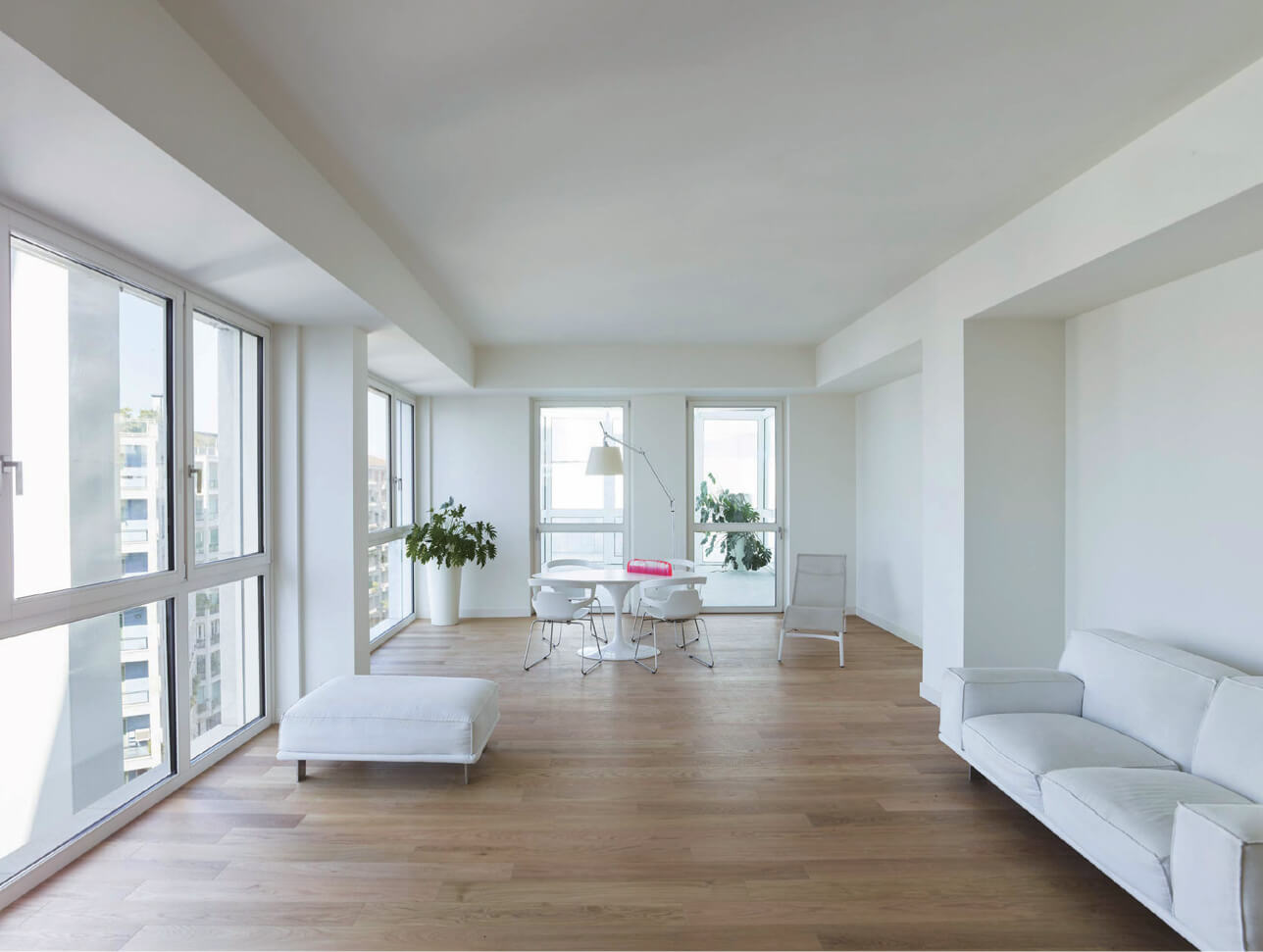First Place – Residential
Residenze Carlo Erba
Architects: Eisenman Architects,Degli Esposti Architetti, AZstudio
Design Team: Eisenman Architects,Degli Esposti Architetti, AZstudio
Description:
For a triangular site, this project seeks to create a distinctly contemporary apartment building, presenting itself as a current milestone in a genealogy of the Milanese house. Characterized by a peculiar S-form, it solves the issue of the street relationship, without a construction along the boundaries of the block, like three exceptional precedents: the Ca’ Brütta, the Casa Rustici, and the Corso Italia Complex.
The building is composed of a series of horizontal bands stacked with slight offsets that create four different layers in the nine-story body. The first three floors constitute a base course with travertine cladding and punched window openings, with inset balconies. The fourth floor, the piano nobile, is set back from both the face of the travertine base and the marble face above. The third layer, floors five-six, is articulated by enameled metal frames that create a horizontal band of golden rectangles running the length of the façade. These frames, and a giant order that embraces floor five to nine, are set forward of the actual west face of the building. On the east one, they excavate the mass of the building in a carving lattice. The topmost layer, floors seven-nine in a stepped profile, is a series of urban villas with large terraces.
This project can be read from at least two analogous yet unequal positions. The first is an investigation on the permanence of a limit-of-beginning, intended as a unitary conception of a Platonic solid, although discussed through design operations, towards deformation and decomposition; and of a tension-at-the-limit, which is the modern language, whose new origins are explored through formal and automatic processes. The second position is the research of the feasibility of coexistence – within a single composition – of several motifs (both in the syntax and in an abstraction-materiality dichotomy), trying out alternative possibilities with respect to stable conventions that persist in architecture, like the concinnitas.


